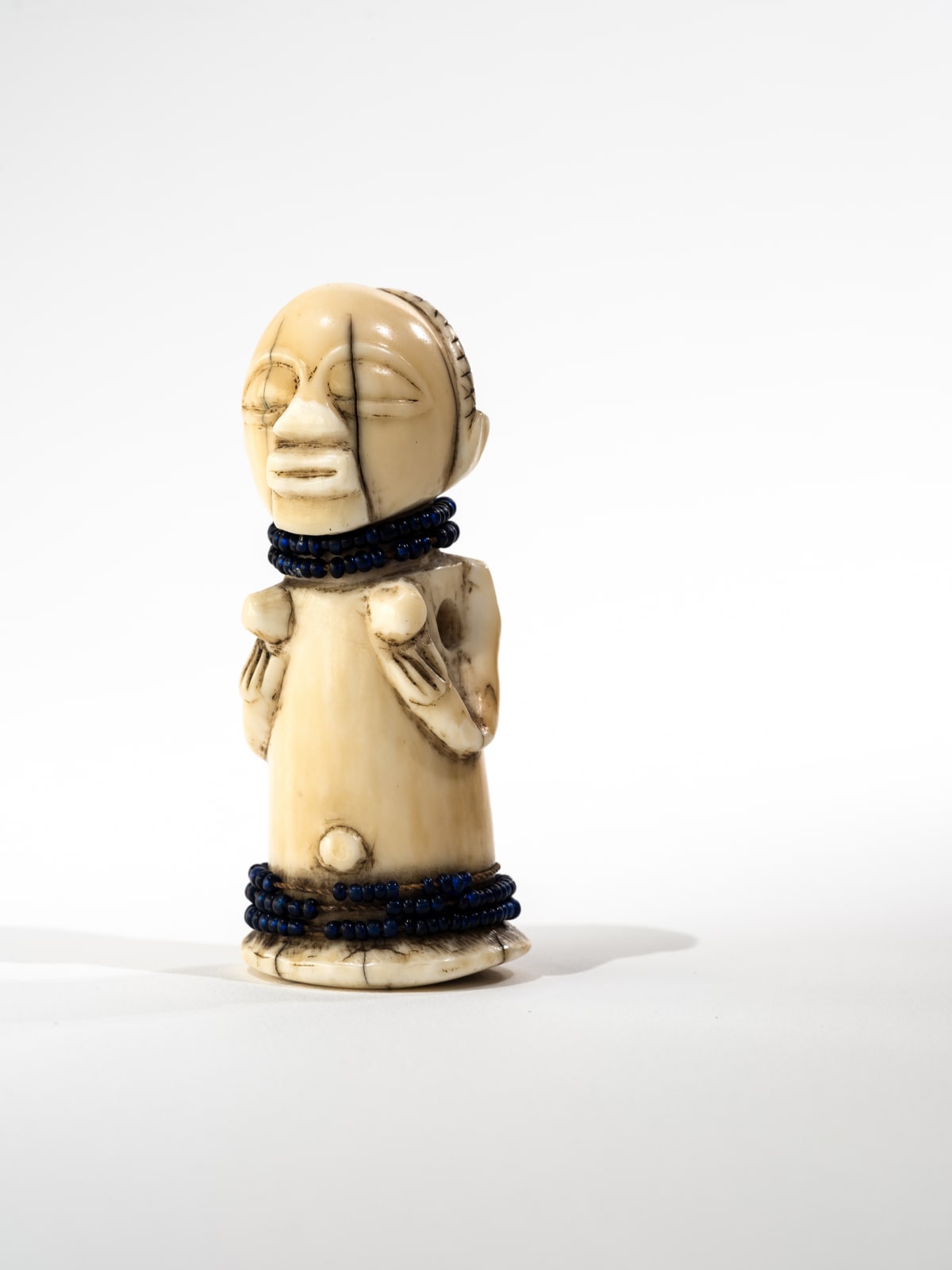Anonymous artist
Luba Statue
Ivory, beads, fibers
Origin: D.R. Congo
Origin: D.R. Congo
height 8 cm
height 3 1/8 in
height 3 1/8 in
Copyright Duende Art Projects
Photo: Valentin Clavairolles
Further images
Amateurs of Japanese art could interpret a small ivory Luba pendant as a Congolese netsuke. Although each Luba pendant is slightly different in detail, all share a minimalist interpretation of...
Amateurs of Japanese art could interpret a small ivory Luba pendant as a Congolese netsuke. Although each Luba pendant is slightly different in detail, all share a minimalist interpretation of the female body, emphasizing the head and torso while excluding the legs. Characteristically the hands of the figure support the breasts. This gesture conferred respect, strength, and the holding of sacred secrets. These amulets depict ancestor spirits and were worn on a cord around the neck or arm, under the armpit or round the waist, either alone or grouped with other objects, including amulets, beads, and horns. They protected the wearer against diseases, witchcraft, and other misfortunes. As a mark of respect to the ancestors, they were periodically anointed with oil. Together with the constant contact with the wearer’s skin, this use ensured a smooth, softened surface and a rich caramel color at the back. The ancestor’s spirit was further honored by strings of imported blue glass beads around the neck and waist. Luba amulets from the same artist can be found in the collections of the Royal Museum for Central African in Tervuren, Belgium, and in the Dallas Museum of Art in Texas (1982.367.FA). The anonymous Luba artists’ signature iconographic element is the way he connects the triangular nose with the arched eyebrows.
Provenance
Lucien Van de Velde, Antwerp, 2006
Cees Van Strien CollectionBy descent through family, 2022









